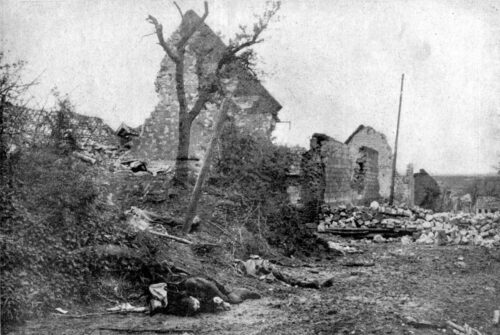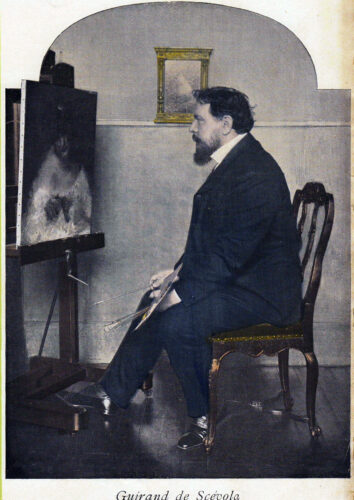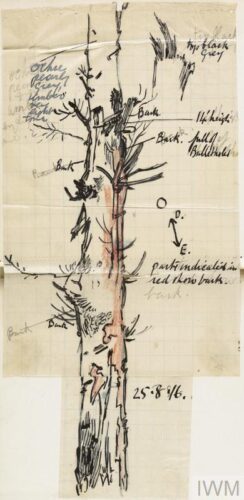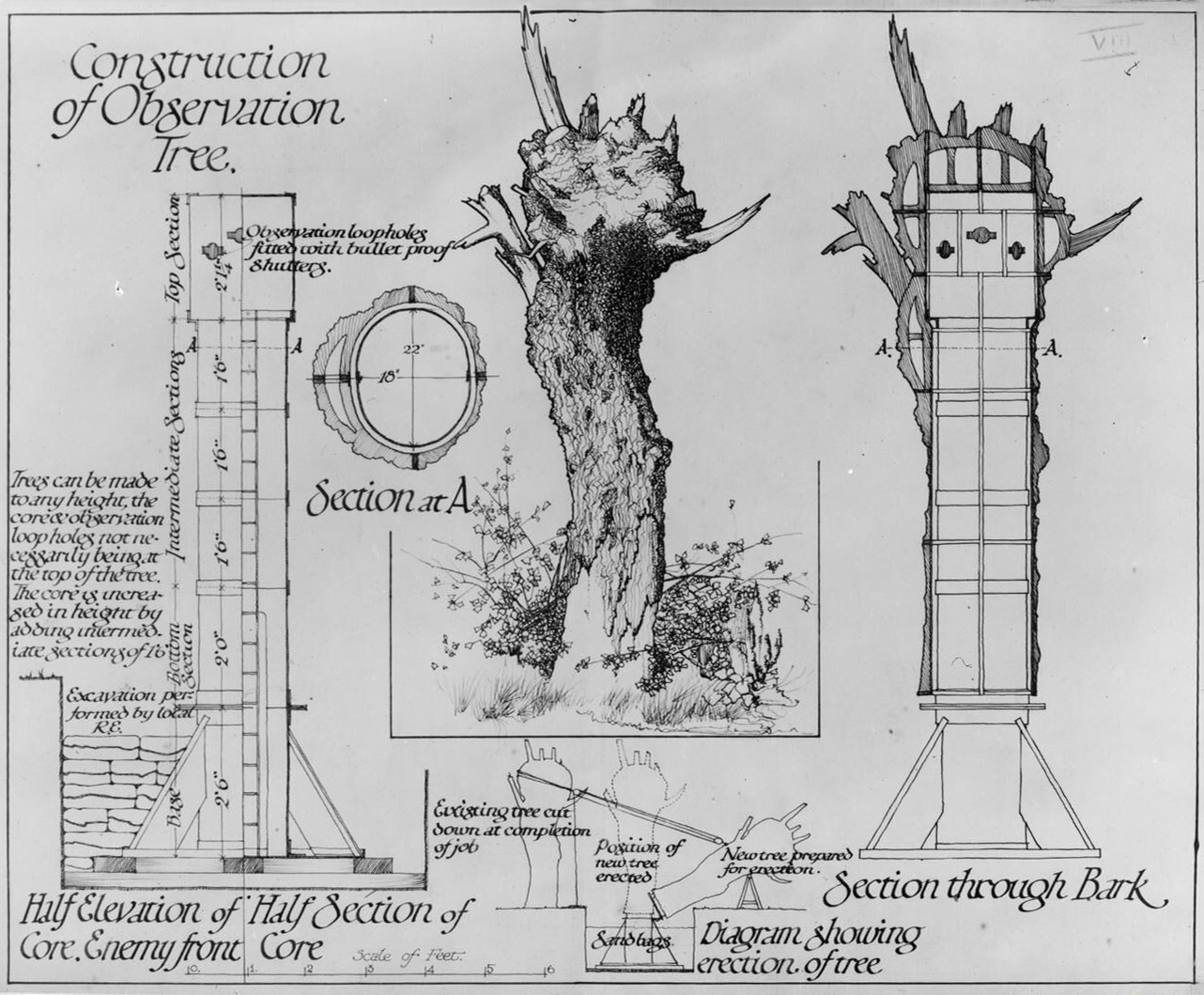Camouflage tree drawing. UK Ministry of Information. Imperial War Museum.
We all know about the Trojan Horse, but what about the Trojan Tree? During World War I, both sides on the Western Front were engaged in trench warfare, making observations of enemy forces’ activity difficult. To overcome this challenge, the concept of camouflage trees was introduced.
The camouflage tree was invented by the French painter Lucien-Victor Guirand de Scévola, leader of the French Army’s Section de Camouflage, at the request of General de Castelnau. It was first used in May 1915 during the Second Battle of Artois.

Lucien-Victor Guirand de Scévola
Lucien-Victor Guirand de Scévola was born November 14, 1871, in Sète, France. He is known for his pioneering leadership of the Camoufleurs (the French Camouflage Department) in World War I.
He was a student of Fernand Cormon and Pierre Dupuis at the École des beaux-arts de Paris. De Scévola was a pastellist, remarkable for his silky, velvety and smooth style. He left an extensive body of work including scenes of alcoves, landscapes, flowers and society portraits.
De Scévola is considered one of the inventors of military camouflage during World War I, together with Eugène Corbin and the painter Louis Guingot. At the start of the war, in September 1914, De Scévola, serving as a second-class gunner, experimentally camouflaged a gun emplacement with a painted canvas screen. By the end of 1915, De Scévola became commander of the French Camouflage Corps, employing cubist artists such as André Mare, a specialist in camouflaging lookout posts. By 1917, De Scévola’s team had grown to 3000, taking in artists including Jacques Villon, André Dunoyer de Segonzac, Charles Camoin, Louis Abel-Truchet, and Charles Dufresne.
De Scévola was made an Officer of the Légion d’honneur in 1914, by which time he was known as an elegant society portrait artist De Scévola died on March 29, 1950, in Paris, France.

The Camouflage Tree
A camouflage tree was an observation post made from a hollow metal cylinder, which was camouflaged to resemble a dead tree. The trees were replicas of battle-damaged trees in no-man’s land on the Western Front. They were made behind the lines using sketches drawn by a camouflage artist on the battlefield. The tree’s base was dug into the ground and the entrance concealed.
The British Army erected their first armored tree in March 1916. To build the trees, a military artist would first choose a tree to sketch in no man’s land. This sketch was then used to build an exact hollow replica with a steel core. Under the cover of darkness, the original tree would be cut down and the new metal tree put up in its place.
The observer could then crawl in and watch the Germans in full view, while protected by the tree’s steel core. Camouflaged observation posts were highly valuable during the First World War. Troops needed a solution to help track enemy movements without being seen, while also being protected should they come under enemy attack.

Legacy
The French Camouflage Department’s innovative use of camouflage significantly influenced military tactics, shaping the effective use of deception in warfare. The department’s work laid the foundation for the continued development and use of camouflage in military operations.
The use of camouflage in World War I took many forms, among them, camouflage trees. These trees played a crucial role in providing a strategic advantage to the forces.
A British camouflage tree remains in the permanent collection of the Imperial War Museum’s First World War Galleries. The Australian War Memorial displayed a German camouflage tree during the centenary of World War I.
Resource
Imperial War Museum
IWM.org.uk
